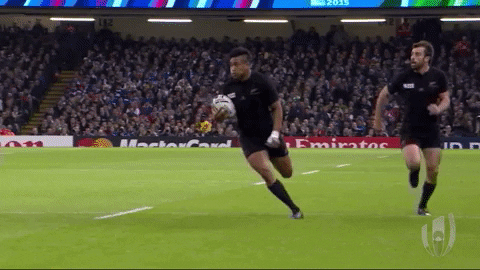
March 2020
In 1845, the first football laws were written by pupils at Rugby School; other significant events in the early development of rugby include the decision by Blackheath F.C. to leave the Football Association in 1863 and, in 1895, the acrimonious split between the then amateur rugby union and the professional rugby league. Historically rugby union was an amateur sport, but in 1995 formal restrictions on payments to players were removed, making the game openly professional at the highest level for the first time.
In the game of rugby union, there are 15 players on each team, comprising eight forwards wearing jerseys numbered 1–8 and seven backs numbered 9–15. In addition, there may be up to eight replacement players on the bench, numbered 16–23. Players are not restricted to a single position, although they generally specialise in just one or two that suit their skills and body types. Players that play multiple positions are called utility players. Forwards compete for the ball in scrums and line-outs and are generally bigger and stronger than the backs. Props push in the scrums, while the hooker tries to secure the ball for their team by hooking it back with their heel. The hooker is also the one who is responsible for throwing the ball in at line-outs, where it is mostly competed for by the locks, who are generally the tallest players on the team. The flankers and number eight are expected to be the first players to arrive at a breakdown and play an important role in securing possession of the ball for their team.
